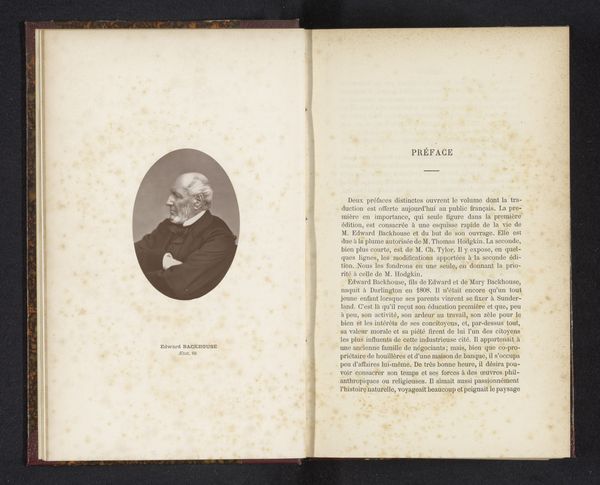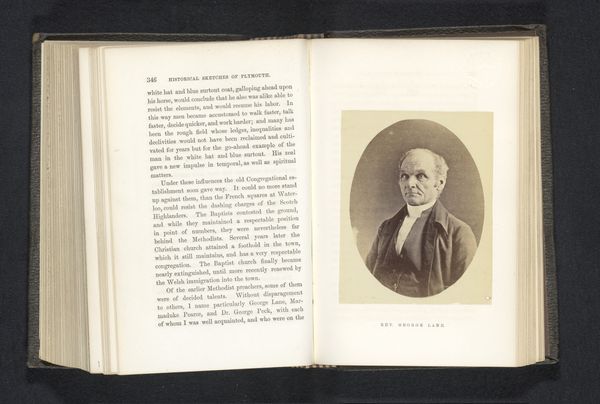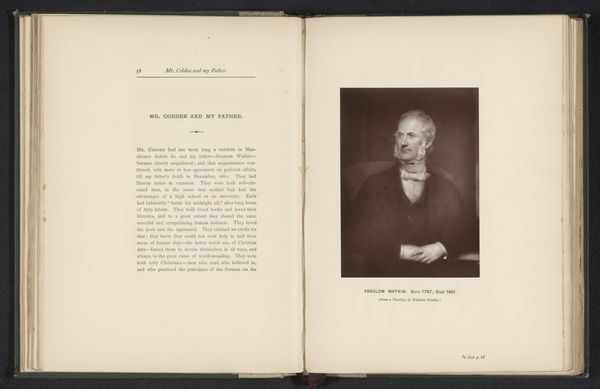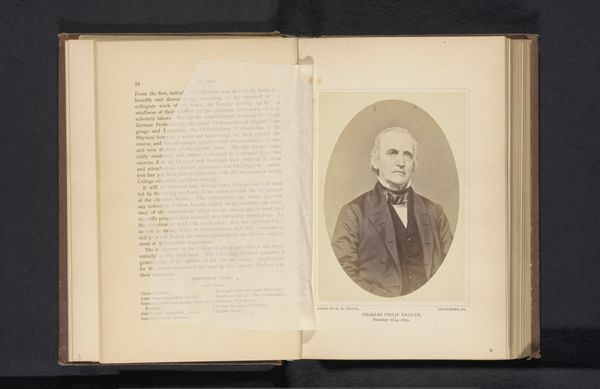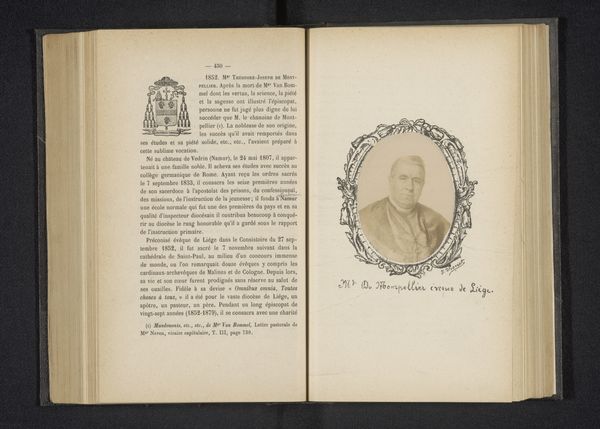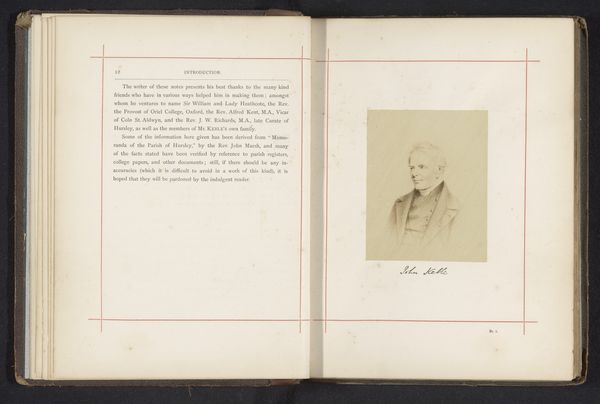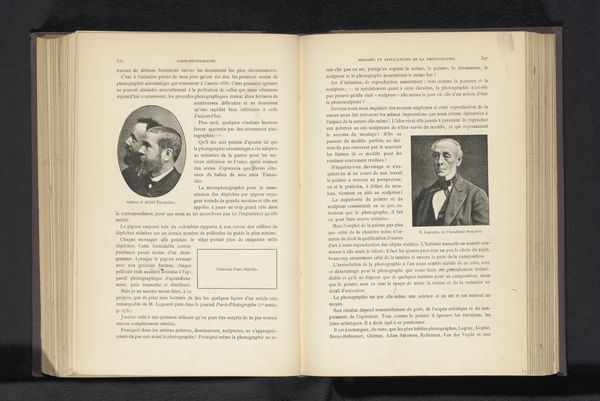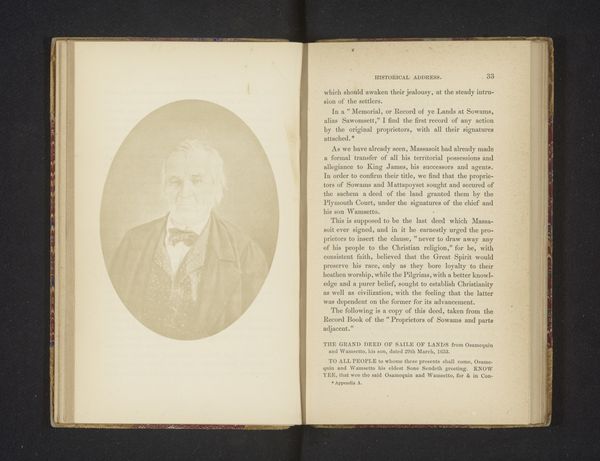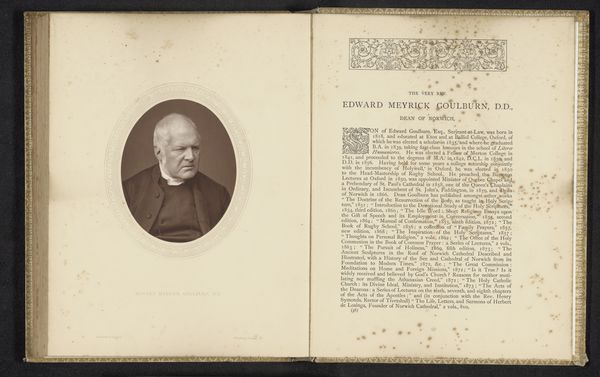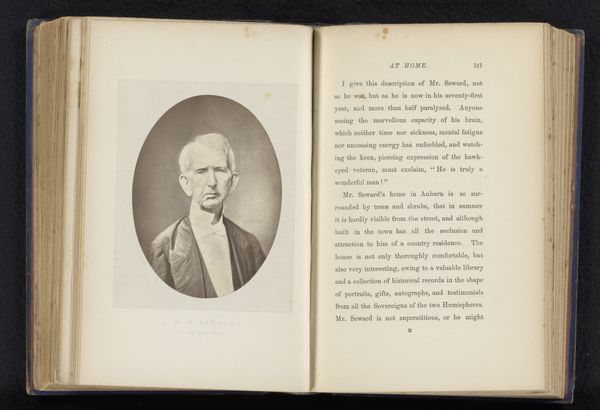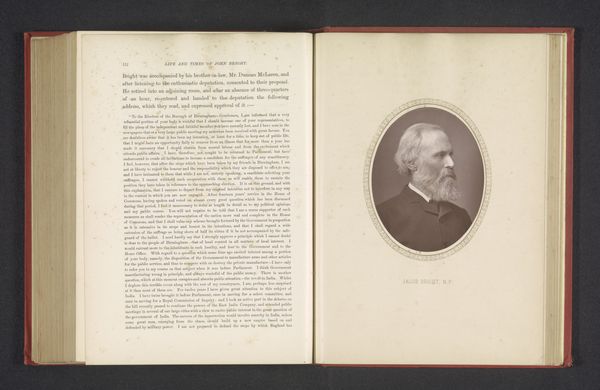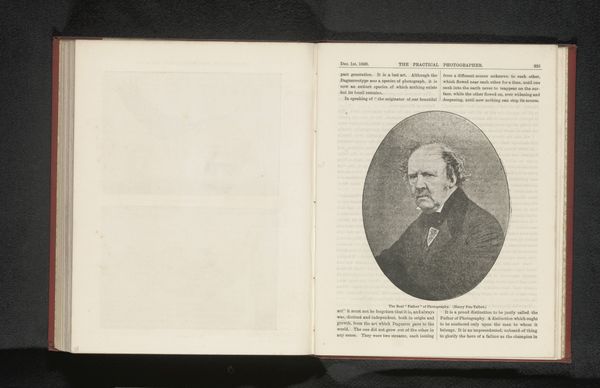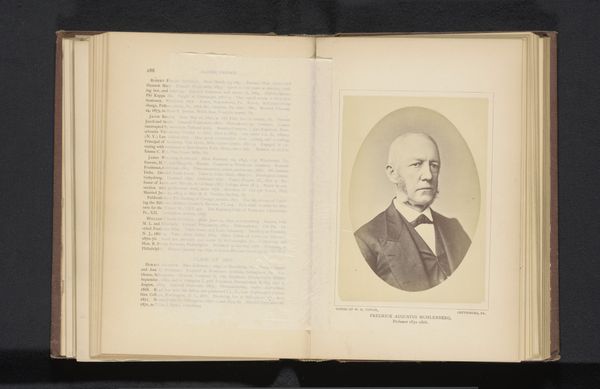
print, paper, photography
#
portrait
#
aged paper
#
homemade paper
#
paper non-digital material
#
paperlike
# print
#
sketch book
#
paper texture
#
paper
#
photography
#
personal sketchbook
#
journal
#
genre-painting
#
letter paper
#
paper medium
Dimensions: height 99 mm, width 66 mm
Copyright: Rijks Museum: Open Domain
Curator: This is a photo reproduction of a portrait of Franz Nachtegall, dating back to before 1877. The piece itself is presented within the pages of what appears to be an old book, printed on aged paper. What strikes you most when you look at this image? Editor: It’s that melancholic air, I think. The faded sepia tone and the way it’s embedded in this antiquated book creates a sense of peering into a distant, almost forgotten past. It feels fragile. Curator: Nachtegall was a Danish gymnastics educator who significantly influenced physical education, establishing Denmark’s first gymnastics program for schools and the military. That stern face belies a man revolutionizing health and fitness! Editor: So, the book is likely a record, maybe a biography of his impact? It contextualizes his position within the educational and military structures of Denmark. I imagine he might have ruffled some feathers challenging established norms about physical discipline. Curator: Undoubtedly! And consider the medium: a photograph reproduced in print. This speaks volumes about the desire to disseminate his image and ideas. It’s not just a portrait; it’s propaganda, a visual statement solidifying his legacy. Editor: Absolutely, though I wonder about accessibility at the time. Was this a widespread publication, or something more exclusive, reserved for a particular class or institution invested in propagating Nachtegall’s approach to physical culture? The homemade paper hints at limited reach. Curator: Good point. It could be a limited edition or even part of a private journal, further imbuing it with intimacy despite the formal portrait. The printing is quite detailed given the apparent age. Editor: Thinking about it from a gender perspective, gymnastics has often been coded and politicized around ideal body types, fitness for military service, even shaping national identity. Nachtegall’s methods, were they inclusive, or did they reinforce specific patriarchal norms? Curator: That’s a critical question, and one this image alone cannot answer. We’d need to delve into his writings and the documented impact of his programs to assess their inclusivity. The portrait, in its formality, mainly signifies power, perhaps unintentionally excluding those not deemed "fit." Editor: It also makes me consider the physical labor involved in early photographic reproduction. It wasn’t the push-button ease we know today. It would be interesting to think about the many unseen hands involved in perpetuating this image. Curator: A fascinating consideration! I find myself pondering the untold stories behind the portrait: the sitter's posture, the photographer's choices, and the bookbinder’s craft. It elevates the portrait beyond a mere likeness into a complex layering of social and historical elements. Editor: Yes, and the power dynamics inherent in representation itself! It reminds me how even seemingly simple portraits can be powerful historical artifacts, reflecting much more than meets the eye.
Comments
No comments
Be the first to comment and join the conversation on the ultimate creative platform.
